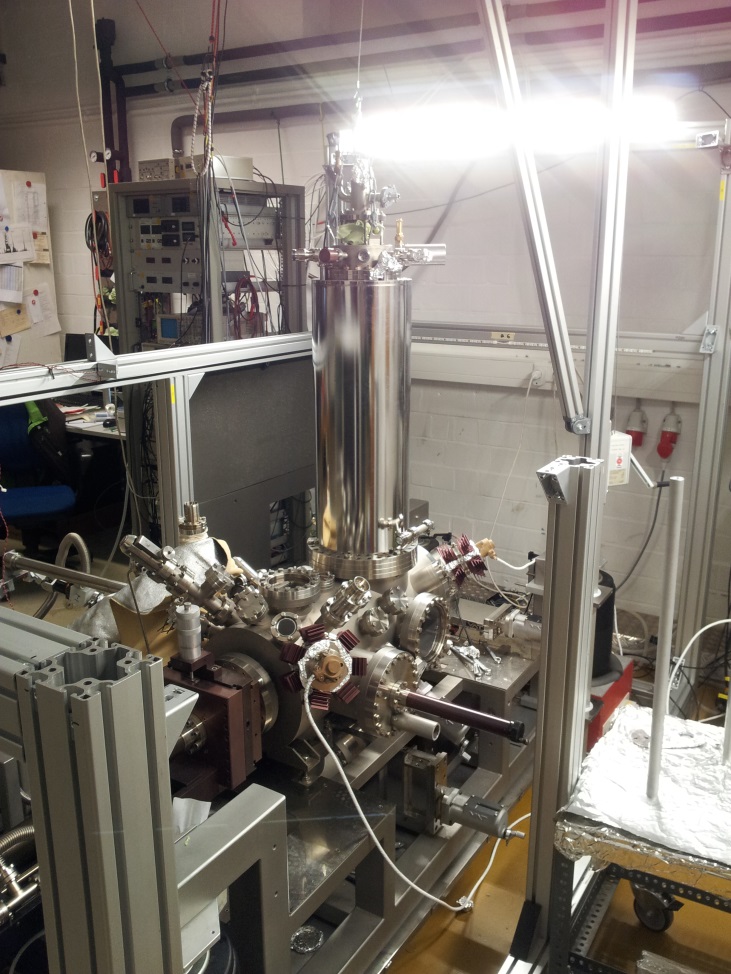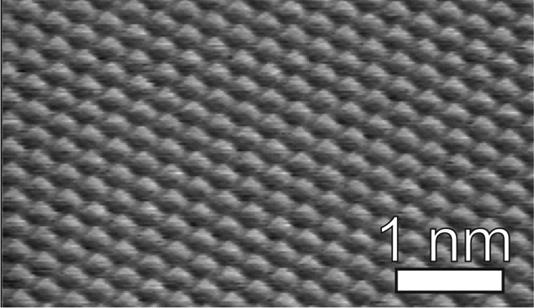The Low-Temperature-Scanning-Tunneling/Atomic-Force-Microscope (LT-STM/AFM)
Since their invention, AFM and STM became widely used tools and essential in surface science thanks to the ability to observe, manipulate, and characterize nanostructures and even single molecules or atoms prepared in an highly controllable environment within an ultra-high vacuum chamber.
High precision: Guided by the inverse piezo effect, the resolution of the probe in the combination of STM and AFM is high enough to make the atomic structure of any surface visible. For example in figure 2 the atomic structure of the hexagonal silver surface is imaged.
Best quality: Several pumping stages provide a pressure difference of 13 orders of magnitude held by strong stainless steel chamber walls. So for every experiment, the base pressure is <4∙10-10 mbar. This fact allows us to get best surface quality – in figure 2 isn’t any impurity visible.
Absolute Control: The ability to precisely control the temperature of the LT-STM/AFM during measurements between 5K and 90 K makes it also possible to observe many thermodynamical processes, which we can freeze in at any time to have a closer look.
Creative: In addition, the manual arrangement of single atoms or molecules is performed by lateral manipulation within the LT-STM/AFM. Other features are scanning tunneling spectroscopy (STS), inelastic electron scanning tunneling spectroscopy (IETS), and force distance spectroscopy (FDS).

Fig. 1: Low-temperature STM/AFM

Fig. 2: Atomic resolution of Ag(111)

